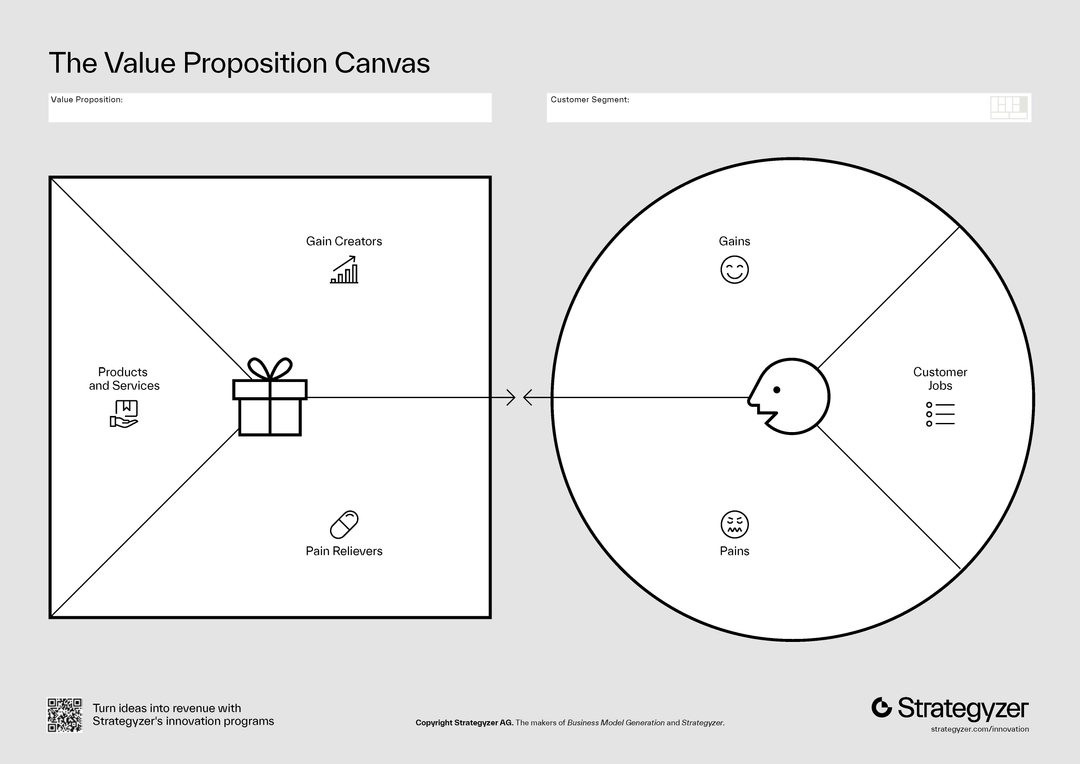Jobs to Be Done (JTBD) Framework
At its core, the JTBD framework asks:
“What job is the customer hiring a product or service to do?”
Focusing instead on progress the customer seeks to make in a specific situation. A “Job” can have three dimensions:
| Dimension | Meaning | Example |
|---|---|---|
| Physical | Tangible actions or bodily experiences | A runner buys lightweight shoes to reduce foot strain. |
| Emotional | Feelings, status, identity concerns | A luxury car purchase to feel powerful or successful. |
| Functional | Practical tasks to accomplish | Buying accounting software to automate expense reports. |
Pains and Gains
Related to JTBD is mapping pains and gains:
| Aspect | Definition | Example |
|---|---|---|
| Pains | What annoys, frustrates, or creates friction for the customer | Bookkeeping is time-consuming and stressful. |
| Gains | Positive outcomes or benefits the customer desires | Want faster, easier financial reporting to feel organized. |
| Understanding pains and gains helps you design solutions that reduce pains and create gains. |
Value Proposition Design and Value Map
The Value Proposition Canvas from Strategyzer formalizes this: https://www.strategyzer.com/library/the-value-proposition-canvas
The idea is “fit” — your solution should tightly align with the customer’s pains, gains, and jobs.
Example:
If small business owners “hire” a service to handle taxes (functional), feel relief (emotional), and save time (physical), a fractional CFO service could offer that — if positioned correctly.

Related: